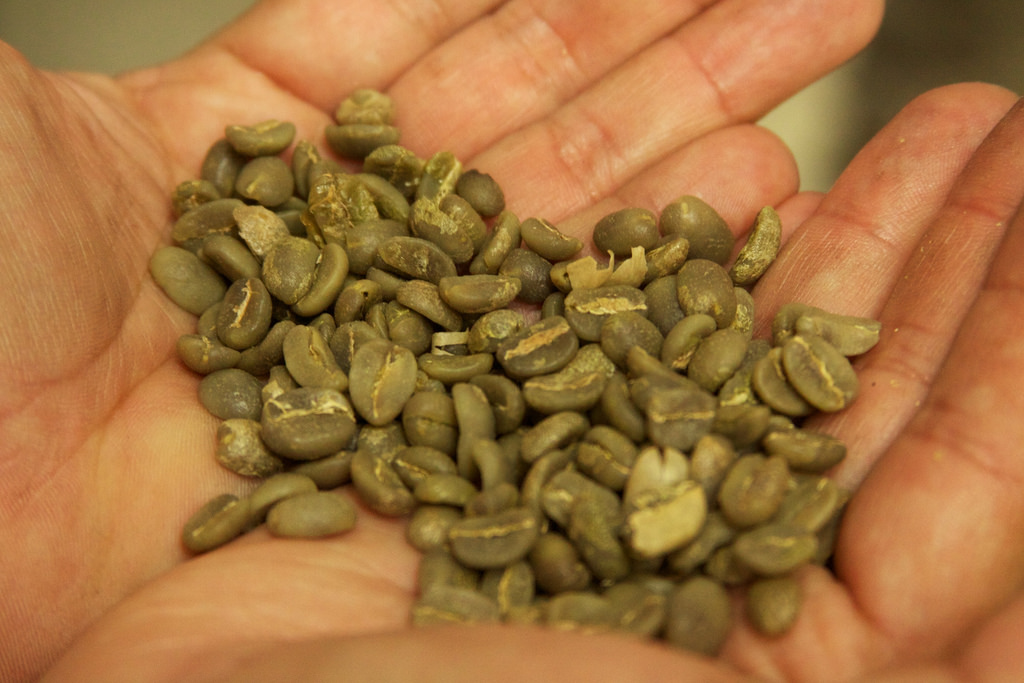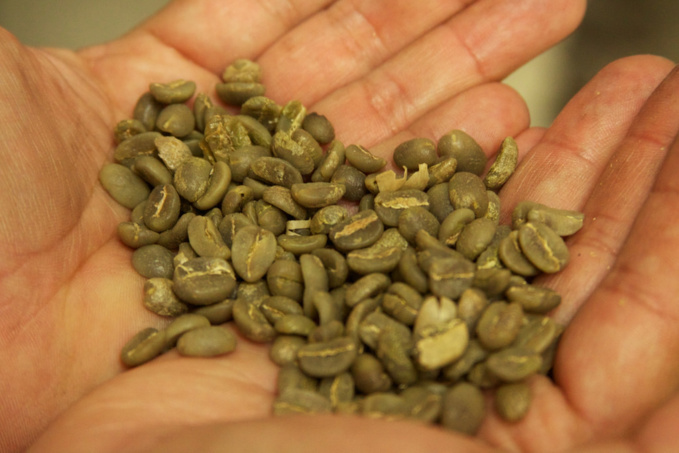Green coffee is taking over increasingly more countries: this product is sold on the Internet, appears in stores and even in particular cafes dedicated to a healthy lifestyle. As a rule, this sort of coffee is several times more expensive than usual. The differences in taste are also huge.
Marketers of the green coffee sellers are convincing the audience that green coffee is a diet drink that promotes weight loss. In fact, green coffee is just unroasted coffee. It is roasting that makes coffee black.
How green coffee became popular
Coffee is a berry, and it does not grow roasted. All black coffee was originally green. It's raw, just like wheat and flour, from which bread is made. And if flour is the raw material, then bread is the final product. Similarly, green coffee is raw material, roasted coffee is a product that we somehow encounter every day.
It is hypothetically possible to consume raw materials, that is, green coffee, in an unprocessed form. But why? It's like trying to eat raw rice.
The myth of dietary and incredibly useful green coffee has become especially prevalent in recent years. It all started with an American study of 2012, saying that drinking green coffee leads to weight loss due to chlorogenic acid, which is in the raw product. Yet, only 16 people took part in the experiment. In the scientific world, this is called an unrepresentative sample, on the basis of which conclusions cannot be drawn. The results of the study have never been formally recognized.
Still, one article was enough to raise the wave of popularity of green coffee. The first trend was picked up by supporters of healthy lifestyles, then, the big brands entered the game, too.
In fact, the product’s popularity is quite transparent economic interest. Roasting green coffee to the finished product implies costs, including equipment. In addition, up to 20% of the volume is lost in the process. What happens instead? On the wave of popularity of a healthy lifestyle, green coffee has become more expensive. For example, cheapest grain is bought at $ 6 per kilogram, and sold at $ 60 per kilogram. The only costs are packaging. But what about the magic chlorogenic acid, which is contained in coffee berries? It ought to be extracted from there, but brewing green coffee is not an efficient way to do it.
What is the danger of green coffee?
Green coffee is picked up, say, in Africa and then is shipped to Europe. As a rule, the storage conditions are unknown. Then, the coffee is consumed without any thermal treatment (unlike roasted coffee); it is just grinded and brewed. But this is similar to starting to eat raw potatoes without cooking.
Is it possible to decontaminate the green coffee? Of course. For example, you can treat it with steam. But the question is, why? In fact, this is pure fiber; cellulose that tastes like… cellulose. Those who work at coffee farms often see how the rats do not even eat green coffee in bags. In most cases, green coffee smells like raw peas, it's not particularly digestible, and there are almost no nutrients.
Green coffee cannot really be cooked. In general, it is just like to brew sawdust. Can this be done? Probably, it is possible - just grind the wood and turn it into sawdust, then pour it with boiling water, you will get a sweet cellulose taste.
source: forbes.com
Marketers of the green coffee sellers are convincing the audience that green coffee is a diet drink that promotes weight loss. In fact, green coffee is just unroasted coffee. It is roasting that makes coffee black.
How green coffee became popular
Coffee is a berry, and it does not grow roasted. All black coffee was originally green. It's raw, just like wheat and flour, from which bread is made. And if flour is the raw material, then bread is the final product. Similarly, green coffee is raw material, roasted coffee is a product that we somehow encounter every day.
It is hypothetically possible to consume raw materials, that is, green coffee, in an unprocessed form. But why? It's like trying to eat raw rice.
The myth of dietary and incredibly useful green coffee has become especially prevalent in recent years. It all started with an American study of 2012, saying that drinking green coffee leads to weight loss due to chlorogenic acid, which is in the raw product. Yet, only 16 people took part in the experiment. In the scientific world, this is called an unrepresentative sample, on the basis of which conclusions cannot be drawn. The results of the study have never been formally recognized.
Still, one article was enough to raise the wave of popularity of green coffee. The first trend was picked up by supporters of healthy lifestyles, then, the big brands entered the game, too.
In fact, the product’s popularity is quite transparent economic interest. Roasting green coffee to the finished product implies costs, including equipment. In addition, up to 20% of the volume is lost in the process. What happens instead? On the wave of popularity of a healthy lifestyle, green coffee has become more expensive. For example, cheapest grain is bought at $ 6 per kilogram, and sold at $ 60 per kilogram. The only costs are packaging. But what about the magic chlorogenic acid, which is contained in coffee berries? It ought to be extracted from there, but brewing green coffee is not an efficient way to do it.
What is the danger of green coffee?
Green coffee is picked up, say, in Africa and then is shipped to Europe. As a rule, the storage conditions are unknown. Then, the coffee is consumed without any thermal treatment (unlike roasted coffee); it is just grinded and brewed. But this is similar to starting to eat raw potatoes without cooking.
Is it possible to decontaminate the green coffee? Of course. For example, you can treat it with steam. But the question is, why? In fact, this is pure fiber; cellulose that tastes like… cellulose. Those who work at coffee farms often see how the rats do not even eat green coffee in bags. In most cases, green coffee smells like raw peas, it's not particularly digestible, and there are almost no nutrients.
Green coffee cannot really be cooked. In general, it is just like to brew sawdust. Can this be done? Probably, it is possible - just grind the wood and turn it into sawdust, then pour it with boiling water, you will get a sweet cellulose taste.
source: forbes.com



















